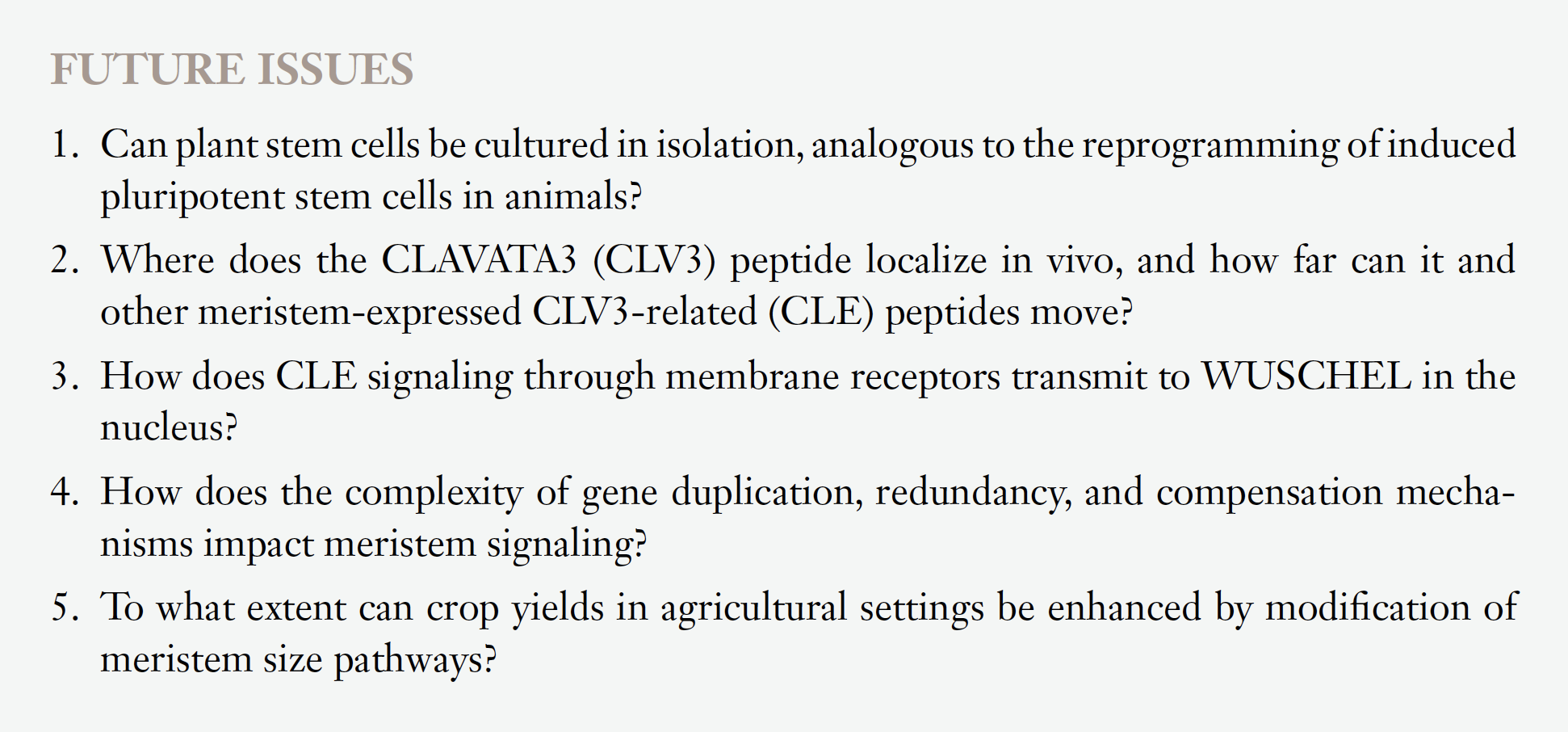博文
Annual Review of Plant Biology:植物分生组织大小遗传调控机制综述
||
Control of Meristem Size
First author: Munenori Kitagawa; Affiliations: Cold Spring Harbor Laboratory (冷泉港实验室): Shanghai, China
Corresponding author: David Jackson
A fascinating feature of plant growth and development is that plants initiate organs continually throughout their lifespan. The ability to do this relies on specialized groups of pluripotent stem cells termed meristems, which allow for the elaboration of the shoot, root, and vascular systems. We now have a deep understanding of the genetic networks that control meristem initiation and stem cell maintenance, including the roles of receptors and their ligands, transcription factors, and integrated hormonal and chromatin control. This review describes these networks and discusses how this knowledge is being applied to improve crop productivity by increasing fruit size and seed number.

植物生长和发育的一个典型特色在植物的整个一生中会持续不断的发生器官起始。植物的这种能力依赖于一群特异化的多能性干细胞,叫做分生组织,使得植物能够不断分化出新的茎、根以及维管系统。目前,我们对于控制分生组织起始以及干细胞维持的遗传机制已经有了很深入的了解,包括受体以及配基、转录因子、各种植物激素以及染色质控制在该过程中的作用。本文的综述了这些调控因子的网络,讨论了这些知识如何可以应用到作物产量提升方面,增加果实的大小和种子的数量。
Tip 1

Tip 2

通讯:David Jackson (https://www.cshl.edu/research/faculty-staff/david-jackson/)
个人简介:1991年,东英格兰大学,博士。
研究方向:调控植物生长和株型的基因及信号。
doi: https://doi.org/10.1146/annurev-arplant-042817-040549
Journal: Annual Review of Plant Biology
Published date: April, 2019
https://blog.sciencenet.cn/blog-3158122-1183994.html
上一篇:the plant journal:SNLs基因控制拟南芥在长、短日照下的成花转变
下一篇:Nature Plants:ZmDMP基因突变有利于玉米单倍体加倍(补2019-06-12)
全部作者的其他最新博文
- • Plant Physiology:CsMADS3促进柑果中的叶绿素降解和类胡萝卜素合成(华中农业大学)
- • Molecular Plant:LBD11-ROS反馈调节作用于拟南芥的维管形成层增殖和次生生长(浦项科技大学)
- • Science Advances:根结线虫通过调控植物的CLE3-CLV1模块,促进侵染进程(日本熊本大学)
- • Nature Communications:油菜素内酯参与植物营养生长期转变的分子机制解析(浙江农林大学)
- • Current Biology:光合作用产生的蔗糖驱动侧根“生物钟”(德国弗莱堡大学)
- • PNAS:花同源异型基因在叶中被抑制、花中被激活的分子机制(南卡罗来纳大学)
